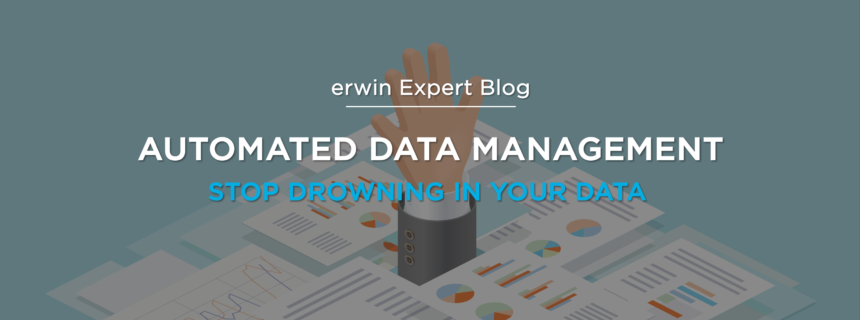Automated Data Management: Stop Drowning in Your Data

Due to the wealth of data data-driven organizations are tasked with handling, organizations are increasingly adopting automated data management.
There are 2.5 quintillion bytes of data being created every day, and that figure is increasing in tandem with the production of and demand for Internet of Things (IoT) devices. However, Forrester reports that between 60 and 73 percent of all data within an enterprise goes unused.
Collecting all that data is pointless if it’s not going to be used to deliver accurate and actionable insights.
But the reality is there’s not enough time, people and/or money for effective data management using manual processes. Organizations won’t be able to take advantage of analytics tools to become data-driven unless they establish a foundation for agile and complete data management. And organizations that don’t employ automated data management risk being left behind.
In addition to taking the burden off already stretched internal teams, automated data management’s most obvious benefit is that it’s a key enabler of data-driven business. Without it, a truly data-driven approach to business is either ineffective, or impossible, depending on the scale of data you’re working with.
This is because there’s either too much data left unaccounted for and too much potential revenue left on the table for the strategy to be considered effective. Or it’s because there’s so much disparity in the data sources and silos in where data is stored that data quality suffers to an insurmountable degree, rendering any analysis fundamentally flawed.
But simply enabling the strategy isn’t the most compelling use case, or organizations across the board would have implemented it already.
The Case for Automated Data Management
Business leaders and decision-makers want a business case for automated data management.
So here it is …
Without automation, business transformation will be stymied. Companies, especially large ones with thousands of systems, files and processes, will be particularly challenged by taking a manual approach. And outsourcing these data management efforts to professional services firms only delays schedules and increases cost.
By automating data cataloging and data mapping inclusive of data at rest and data in motion through the integration lifecycle process, organizations will benefit from:
- A metadata-driven automated framework for cataloging data assets and their flows across the business
- An efficient, agile and dynamic way to generate data lineage from operational systems (databases, data models, file-based systems, unstructured files and more) across the information management architecture
- Easy access to what data aligns with specific business rules and policies
- The ability to inform how data is transformed, integrated and federated throughout business processes – complete with full documentation
- Faster project delivery and lower costs because data is managed internally, without the need to outsource data management efforts
- Assurance of data quality, so analysis is reliable and new initiatives aren’t beleaguered with false starts
- A seamlessly governed data pipeline, operationalized to the benefit of all stakeholders
How to Automate Your Data Operations
70% of organizations spend 10 or more hours per week searching for and preparing data.
Request a Demo
